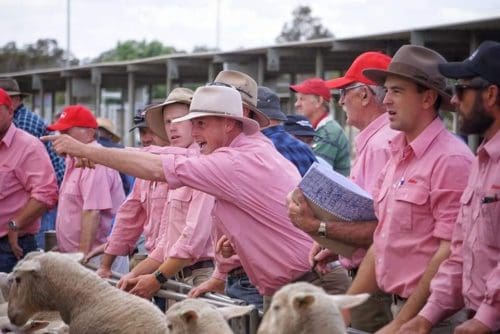 DEMAND for Australian sheep meat is expected to remain steady and wool prices are expected to steadily recover, in the first half of 2021, according to Rural Bank’s Australian agriculture outlook 2021.
DEMAND for Australian sheep meat is expected to remain steady and wool prices are expected to steadily recover, in the first half of 2021, according to Rural Bank’s Australian agriculture outlook 2021.
The outlook report said Australian lamb production is forecast to increase year-on-year after being well below average in 2020; however mutton production is expected to remain tight.
The report said most of Australia’s major lamb markets, including the domestic market, have progressed into recovery from COVID-19.
However, the bank said the Eastern States Trade Lamb Indicator (ESTLI) is forecast to spend the first half of 2021 lower than the record highs of the same period in 2020, due to an expected increase in supply and steady export demand.
Rural Bank regional manager agribusiness – NSW, Tony Williams said Australian sheep producers are well-placed heading into 2021 with improved seasonal conditions allowing for flock rebuilding to occur.
“While export demand is expected to remain steady, the increase in supply following a good lambing year in 2020 will likely see lamb prices trend lower year-on-year compared to the strong start to 2020.”
The bank said the United States has been the strongest growth market in 2020, but could be affected by longer and more severe impacts of COVID-19. Chinese demand is expected to remain firm as the impacts of African Swine Fever continue to drive meat imports, although a recovery in Chinese pork production could see this requirement ease.
Wool to receive more consumer support next year
Rural Bank said Australia’s wool supply is expected to increase during the 2020/21 season, but remain below average, and improved seasonal conditions will allow sheep numbers to begin to rebuild from the lowest level on record.
“The Australian wool market is expected to receive support by strengthening consumer demand in China where its more advanced recovery from COVID-19 compared to Europe and the US has led to more favourable economic sentiment. However, in the short term the economic impacts of resurgent COVID-19 outbreaks in the US and Europe are expected to weaken demand for woollen apparel.
Mr Williams said the first half of 2021 is expected to see the Australian wool market slowly recover from a challenging year in 2020.
“Improved seasonal conditions will aid flock rebuilding and drive increased supply which will place some pressure on wool prices.
“This is expected to be offset by slow improvements in demand which could lead to a steady recovery in prices in the first half of 2021,” he said.
The bank said the extent and speed of a recovery in wool prices will largely depend on how quickly retail demand recovers in the US and Europe, adding to already improved demand in China. A recovery in these markets in early 2021 could allow the Eastern Market Indicator to trend along the upper forecast range and return above 1300c/kg by June 2021, the outlook report said.
RCEP agreement is an opportunity to broaden trade
The bank said while trade tensions between Australia and China have been escalating in recent months, the signing of the Regional Comprehensive Economic Partnership (RCEP) should present Australia with opportunities to broaden and deepen economic ties with alternative markets.
There are promising signs for Australia as COVID-19 restrictions ease and foodservice demand returns. Globally, food security concerns caused by COVID-19 will likely cause commodity price fluctuations in the New Year and could present mixed fortunes for Australian agriculture, Rural Bank said.
Rural Bank chief operating officer Will Rayner said that with production levels increasing across many commodities, there were significant opportunities heading into 2021.
“Favourable seasonal conditions have brought much needed rainfall for producers and we expect 2021 to be positive from a supply point of view.
“Increased water availability alongside strong restocking activity in 2020 and access to feed will help keep production levels strong,” he said.
“A number of commodities have been significantly affected by recent trade sanctions put in place by China.
“We have seen a pattern emerge of disruption to commodities including barley, beef and wine and producers will need closely watch this in coming months,” Mr Rayner said.
“The signing of RCEP is a positive sign for Australian producers looking to diversify export markets.
“It is likely to provide non-tariff advances among the 15 countries, with our two largest agricultural export markets China and Japan also signatories to the partnership.”
He said agriculture has for the most part been resilient through COVID-19, providing food and fibre to millions of people in Australia and overseas.
“While the broader economic recovery remains uncertain, the success of agriculture this year demonstrates its underlying strength as well as the growth potential of the sector,” Mr Rayner said.
To view the full Australian agriculture outlook 2021 click here.

Where were our leaders when Prime Minister Morrison began his destructive rampage against China?
What have our leaders done to inform Morrison of the devastation caused by his reckless and outrageous abuse of our largest trading partner?
When will Morrison suffer the consequences of his ill-advised foray into foreign affairs?
Morrison should be the first to suffer the pain caused by his actions, not the last, for Morrison has surely blessed exporters with the Christmas from hell…